Mathematics can be challenging for children, especially when it comes to fractions. However, understanding fractions is a crucial aspect of everyday life, and it can help children develop problem-solving skills and critical thinking abilities. One of the fundamental concepts in fractions is understanding half of 1. In this article, we will provide you with tips and strategies to teach your child about fractions, specifically focusing on how to explain half of 1.
Understanding fractions is an essential skill for children to develop, and it can seem daunting at first. But don’t worry, we’re here to help! By using fun and simple techniques, you can engage your child in learning fractions and make math an enjoyable experience. Let’s get started!
Key Takeaways:
- Understanding fractions is a crucial aspect of everyday life.
- Half of 1 is a fundamental concept in fractions.
- Teaching fractions to children can be made fun and simple.
- Visual aids can greatly enhance a child’s understanding of fractions.
Why Teach Children About Fractions?
Understanding fractions is an essential math skill for children to develop. It can help them with problem-solving and critical thinking, and it’s an important aspect of everyday life. When children learn about fractions, they can make sense of parts of a whole, and they can relate different fractions to one another. Moreover, teaching fractions can be fun and rewarding for both children and parents or educators.
Visual aids can be a great way to make fractions more accessible to kids. Using images, like the ones below, can help them understand the concept of dividing something into equal parts. Also, fun and interactive activities, like games and puzzles, can engage children and help them learn fractions in a more engaging way.
| Visual Aid 1 | Visual Aid 2 |
|---|---|
 |
 |
Another benefit of teaching fractions is that it can help children in other areas of math, such as addition and subtraction. By understanding fractions, children can develop a more profound sense of number relationships. They can also improve their ability to estimate and solve problems that require fractions. When children learn fractions at an early age, they can develop a solid foundation to build upon as they progress through school.
Explaining Half as a Fraction
Understanding half as a fraction is an important foundation for children to learn. It can help them grasp other math concepts related to fractions and make problem-solving easier. So, how can you explain half as a fraction to a child?
One approach is to use visual aids like a pizza or a chocolate bar to demonstrate dividing something into two equal parts. Show your child how half of the pizza or chocolate is the same as one-half of the whole. Using everyday objects like these can help children understand fractions in a relatable way.
Another way to explain half as a fraction is to use diagrams or drawings. Draw a circle or square and divide it into two equal parts. Label one part as one-half of the whole. This can help children see how halves relate to the whole and how fractions are used to represent parts of a whole.

Remember to emphasize that halves are equal parts of a whole. That means if you have two halves, you have one whole. It’s also helpful to use everyday language when explaining fractions, such as “half” instead of “one-half.” This can make the concept easier to understand.
Using Everyday Objects to Demonstrate Half of 1
One great way to teach children about fractions is to use everyday objects to demonstrate concepts like half of 1. This approach provides a hands-on and practical learning experience that can make math more enjoyable and less intimidating.
A simple example is to use fruits – cut an apple, banana, or orange in half, and ask your child to identify which half is bigger. You can also use toys, like a set of blocks or Legos, and ask your child to divide them into two equal groups.
Another fun way to demonstrate half of 1 is to use household items like a pizza or chocolate bar. Cut the items in half and explain to your child that each piece is now one half of the whole. This will help them visually understand the concept of dividing something into two equal parts.

Using everyday objects to teach fractions can make the learning experience more engaging and relatable. It can also help children understand how fractions are relevant in everyday life, such as when sharing food or dividing up objects among friends.
Interactive Games and Activities
If you want to make learning about fractions fun and engaging for your child, consider using interactive games and activities. These can help your child grasp the concept of half of 1 and other fractions in a playful and interactive way.
One example of an interactive game is fraction bingo. You can create bingo cards with fractions on them and use pieces of candy or other small objects as markers. As you call out the fractions, your child can cover them up on the bingo card. This game not only helps with understanding fractions but also promotes listening and focus skills.
Another fun activity is fraction puzzles. You can create puzzles using images that are divided into halves, thirds, or quarters, and ask your child to put them back together in the correct order. This activity not only helps with fraction recognition but also promotes problem-solving skills.
You can also use fraction sorting activities, where your child has to sort objects into halves, thirds, or quarters. For example, you can use a bag of different colored beads and ask your child to sort them into groups of halves and quarters. This activity promotes tactile learning and helps with understanding fractions as parts of a whole.
Remember, the key to making these games and activities effective is to ensure they are age-appropriate and fun. Keep it simple and playful, and your child will enjoy learning about fractions.
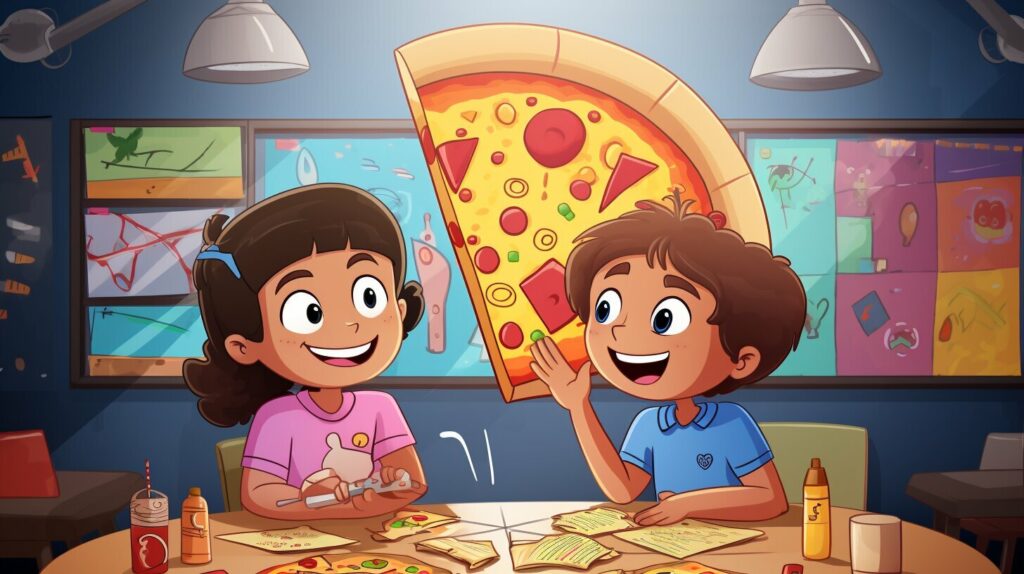
Relating Half of 1 to Other Fractions
Understanding half of 1 is a foundational concept that can help children learn and relate to other fractions. As they grasp the concept of dividing an object into two equal parts, they can easily extend this idea to fractions that are not split in half.
For example, when children understand that one-half is the same as dividing an object into two equal parts, they can visualize that one-third is dividing an object into three equal parts, with one of these parts being shaded.
Similarly, they can see that one-fourth is dividing an object into four equal parts, with one of these parts being shaded, and so on for other fractions.
This makes learning fractions less intimidating since children can relate new concepts to something they already understand, rather than trying to learn each fraction in isolation.

Plus, as children grow more comfortable with working with fractions, they can see how fractions are used in real-world situations like cooking, dividing up items, and sharing with friends.
By providing this foundation and encouraging children to explore other fractions through visual tools and practice activities, you can help them develop a strong understanding of math concepts that will serve them well as they progress in school and beyond.
Using Visual Models and Manipulatives
If your child is a visual learner, using visual models and manipulatives can be a helpful way to reinforce their understanding of fractions. Fraction bars and fraction circles are two examples of manipulatives that can help your child visualize half of 1. These tools allow your child to physically manipulate the fractions, making the concept more tangible and easier to understand.
To use fraction bars, have your child arrange the bars to show half of 1. They can use different colors to distinguish between the whole and the two halves. This will help them see that half of 1 is equal to 1/2.
| Whole | Half | Half |
|---|---|---|
 |
 |
 |
Similarly, fraction circles can help your child visualize how fractions are parts of a whole. They can color in or shade half of the circle to show half of 1. This will help your child see that half of 1 is equal to 1/2.
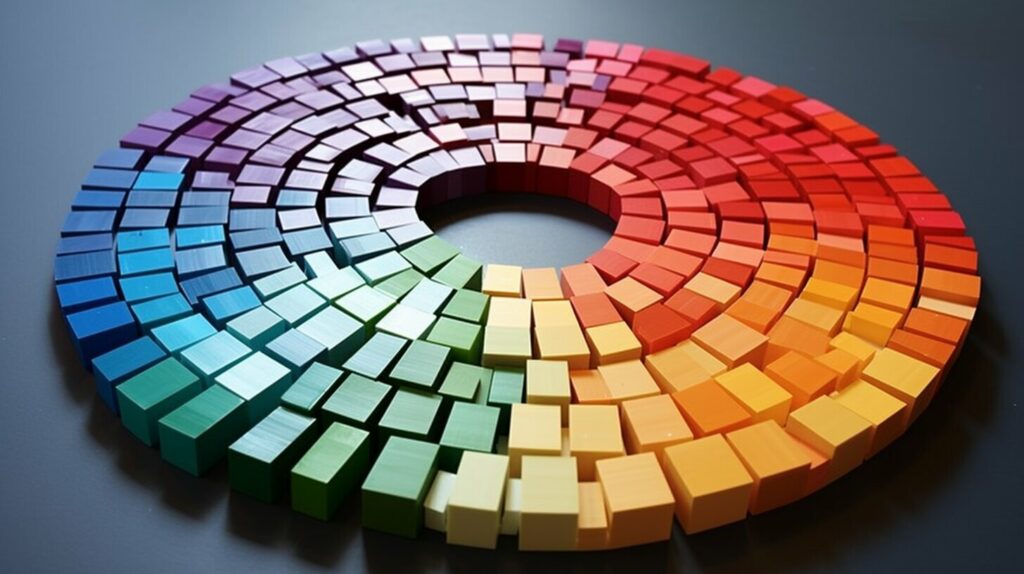 |
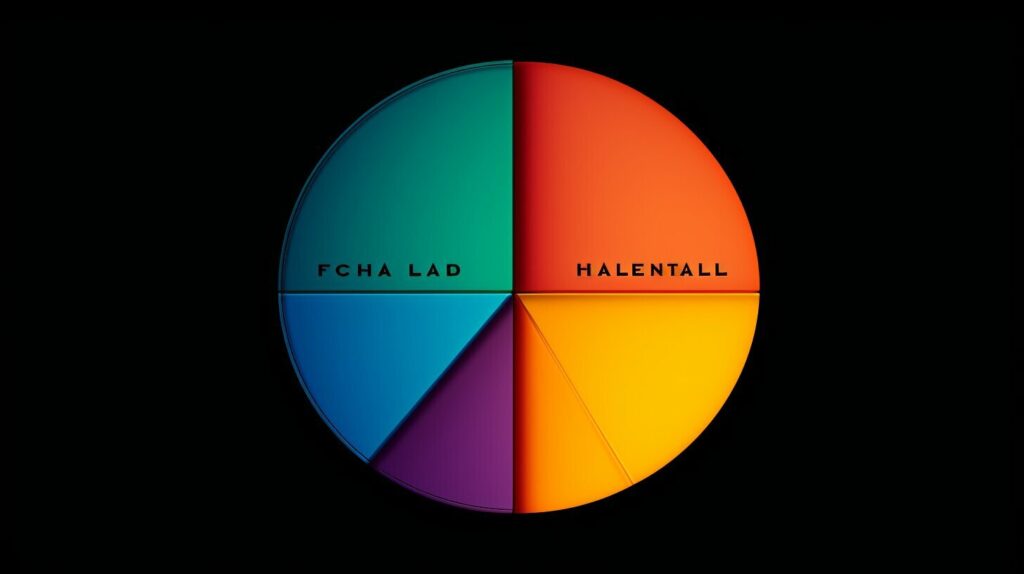 |
Using these visual models and manipulatives can make learning about fractions more engaging and accessible for your child.
Real-World Applications of Half of 1
Understanding the concept of half of 1 is not only essential in math but also applicable in daily life. Here are some real-world examples where fractions play a vital role:
| Scenario | Example |
|---|---|
| Sharing food | Imagine you have one pizza and two friends. You want to divide the pizza equally among the three of you. Each person would get half of the pizza, which is half of 1. |
| Dividing objects | You have a toy train set with four train cars. If you want to give half of the set to your friend, you need to give them two train cars, which is half of the set or half of 1. |
| Measuring ingredients | When cooking or baking, following a recipe requires understanding how to measure ingredients properly. For instance, if a recipe calls for half of a cup of flour, you need to know how much that is in order to get the recipe right and make delicious baked goods. |
By learning about fractions early on, children can develop practical skills that are necessary in their daily lives. They will be able to share fairly, divide objects equally, and measure ingredients correctly.

Reinforcing Learning Through Practice
Repetition is key to learning any new concept, and fractions are no exception. Encourage children to practice their understanding of half of 1 through various exercises and games. Here are some ideas:
- Use worksheets or online resources that offer fraction exercises. You can find many free resources online that cater to different age groups and learning levels.
- Play fraction games such as Fraction War, where children draw and compare cards with different fractions to determine which is greater.
- Get creative with fraction activities such as cutting up different colored construction paper into equal parts and asking children to match them to their corresponding fraction.
- Use interactive apps like Mathland or Math Games to provide children with a fun and engaging way to practice their fraction skills.
The key to successful practice is to make it engaging and fun. Try to incorporate the interests of your child, such as using their favorite toys or foods to make the learning experience more relatable. Remember to always provide support and positive reinforcement, as this will help create a positive attitude towards math and learning in general.
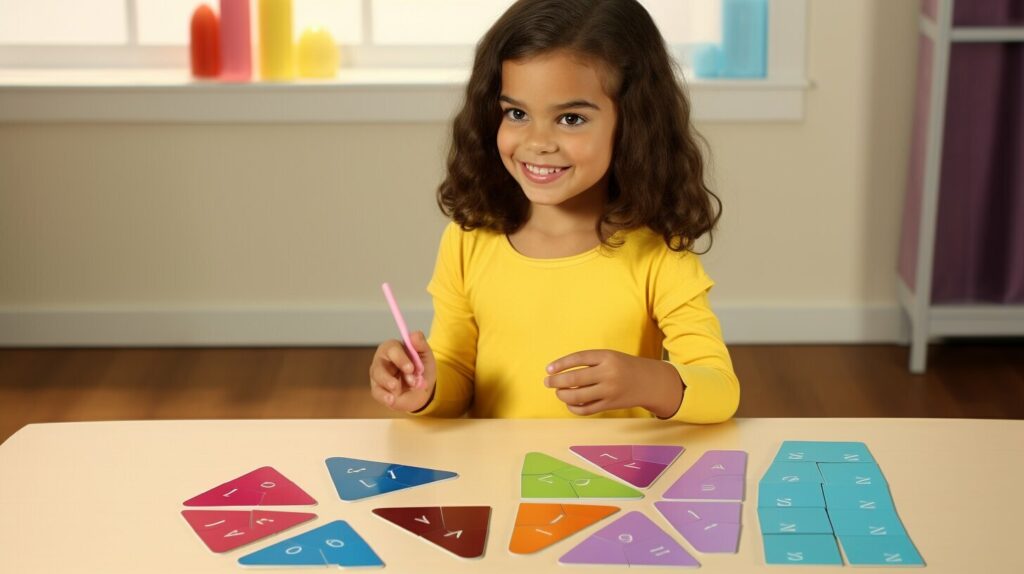
Addressing Common Challenges
Teaching fractions, especially half of 1, can be challenging for kids. However, there are ways to overcome the difficulties and help children understand and enjoy math. Here are some tips to address common challenges:
- Breaking down complex concepts: Use real-life examples to explain concepts in simple terms. For example, dividing a pizza or a cake into halves to show half of 1.
- Introducing related concepts: Relate half of 1 to other fractions, like quarters or thirds. This helps children see the connections between different concepts and make learning easier.
- Using visual aids: Visual models and manipulatives, such as fraction bars or circles, can help children see fractions as tangible objects and better understand the concept of half of 1. Check out this website for some great visual aids.
- Providing practice: Practice makes perfect! Use worksheets, online resources, or interactive apps to provide children with additional opportunities to practice and apply their understanding of fractions, including half of 1. Check out this website for free printable fraction worksheets.
Remember, learning about fractions can be challenging, but with the right strategies and tools, it can also be fun and rewarding. Keep practicing and exploring, and soon enough, your child will become a fraction pro!
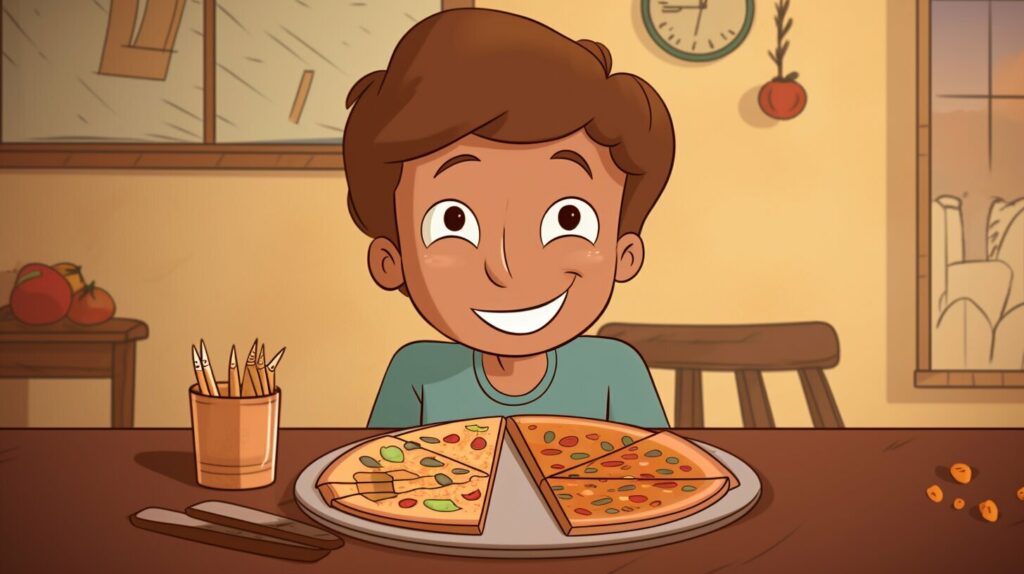
Conclusion
Teaching children about fractions, particularly half of 1, can be a foundational concept in math and have a positive impact on their problem-solving and critical thinking skills. By using visual aids, everyday objects, interactive games, and real-world applications, children can develop a better understanding and appreciation for fractions.
Reinforcing learning through practice, using visual models and manipulatives, and addressing common challenges can further enhance children’s understanding of fractions. By implementing the tips and strategies discussed in this article, parents and educators can make math enjoyable and accessible for children.
Remember, learning fractions doesn’t have to be daunting. With a little effort, patience, and creativity, you can help your child master the concept of half of 1 and other fractions. Start small, break down complex concepts into simpler ones, and relate them to real-life situations. With practice, your child will soon be a fraction whiz!
How Can I Explain More Complex Concepts to my Child?
Explaining complex concepts to children can be challenging, but breaking them down into simpler terms can make a huge difference. Take the opposite explained simply for kids, for example. Use relatable examples and analogies to help them grasp the concept. Encourage questions, use visual aids, and encourage critical thinking to ensure a thorough understanding.
FAQ
Q: Why is it important to teach children about fractions?
A: Teaching children about fractions is important because it helps them develop problem-solving and critical thinking skills. Understanding fractions is also a fundamental aspect of everyday life.
Q: How can I explain half as a fraction to a child?
A: You can explain half as a fraction by using visual aids, such as a pizza or a chocolate bar, to show them how something can be divided into two equal parts.
Q: Can you give me examples of everyday objects I can use to demonstrate half of 1?
A: Sure! You can use fruits, toys, or household items to demonstrate half of 1. For example, you can cut a fruit in half or divide a set of toys equally between two children.
Q: What are some interactive games and activities that can help children understand half of 1?
A: Interactive games like fraction bingo, fraction puzzles, or fraction sorting activities can help children grasp the concept of half of 1 in a fun and engaging way.
Q: How can understanding half of 1 help children with other fractions?
A: Understanding half of 1 can serve as a foundation for understanding other fractions. Children can relate the concept of half to thirds, quarters, and other fractions, making it easier for them to learn and apply these concepts.
Q: How can visual models and manipulatives help children understand half of 1?
A: Visual models and manipulatives, such as fraction bars or fraction circles, can help children visualize and understand half of 1. These tools can make the learning process more interactive and hands-on.
Q: In what real-world situations is the concept of half of 1 applicable?
A: The concept of half of 1 is applicable in various real-world situations like sharing food, dividing objects, or measuring ingredients. Understanding fractions is essential in these scenarios.
Q: How can I reinforce learning about half of 1?
A: You can reinforce learning about half of 1 through practice. This can include using worksheets, online resources, or interactive apps that provide opportunities for children to apply their understanding of fractions.
Q: What are some common challenges children may face when learning about half of 1 and fractions?
A: Common challenges children may face include understanding complex concepts and relating fractions to real-life situations. Strategies like breaking down concepts and using real-life examples can help overcome these challenges.
Q: Can you provide a summary of the main points discussed in this article?
A: Sure! This article discusses the importance of teaching children about fractions, particularly half of 1. It provides tips and strategies for explaining fractions, using visual aids, engaging in interactive activities, and reinforcing learning. Additionally, it addresses common challenges and emphasizes the practical applications of fractions in everyday life.






